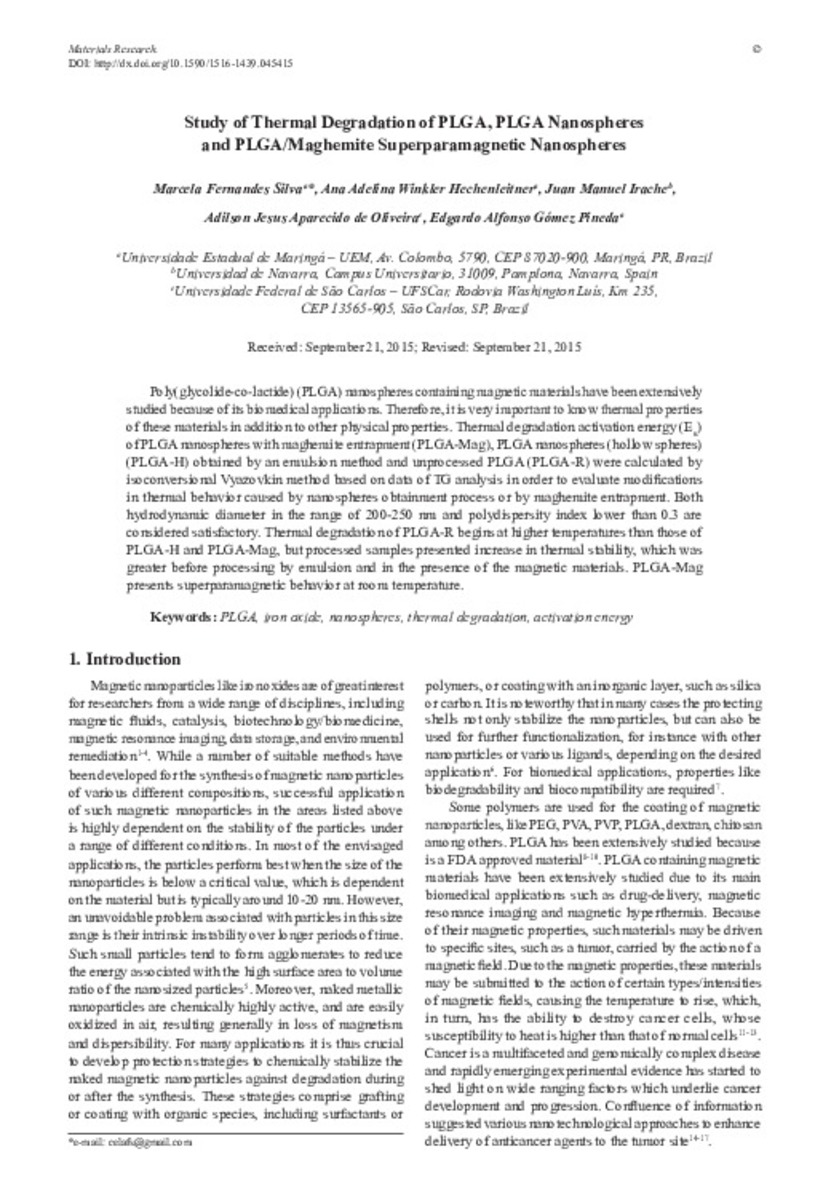Study of thermal degradation of PLGA, PLGA nanospheres and PLGA/Maghemite superparamagnetic nanospheres
Palabras clave :
PLGA
Iron oxide
Nanospheres
Thermal degradation
Activation energy
Materias Investigacion::Ciencias de la vida::Biofísica
Fecha de publicación :
2015
Editorial :
ABM; ABC; ABPol
Cita:
Fernandes-Silva M, Winkler-Hechenleitner A, Irache JM, Aparicio de Oliveira AJ, Gómez-Pineda EA. Study of thermal degradation of PLGA, PLGA nanospheres and PLGA/Maghemite superparamagnetic nanospheres. Mat Res 2015;18(6):1-7
Aparece en las colecciones:
Estadísticas e impacto
0 citas en

Los ítems de Dadun están protegidos por copyright, con todos los derechos reservados, a menos que se indique lo contrario.










